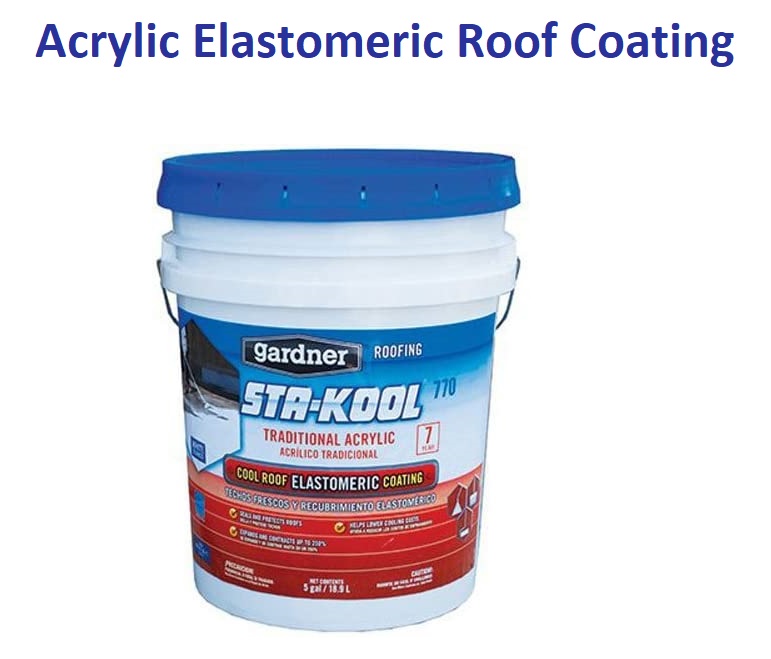When it comes to roof coatings, there are a variety of options available on the market, each with their own unique benefits and drawbacks. Two of the most popular types of coatings are silicone and acrylic roof coatings, both of which are widely used in commercial and residential roofing applications. In this blog post, we will explore the differences between these two types of coatings and the factors that should be considered when choosing between them.
Contents
Silicone Roof Coatings
Silicone roof coatings are a popular choice for roofing applications due to their durability, flexibility, and waterproofing properties. They are commonly used on flat or low-slope roofs, as well as on metal roofs. Silicone coatings are made from a mixture of silicone and solvents, which are sprayed or rolled onto the roof surface. Once the coating has been applied, it cures to form a seamless, waterproof membrane.
One of the primary benefits of roof coatings is their ability to withstand extreme temperatures, making them ideal for use in areas with hot summers or cold winters. Silicone coatings can also resist UV rays and other environmental factors, which helps to prevent cracking, chalking, and other forms of degradation. Additionally, silicone coatings can be applied to a variety of roofing substrates, including asphalt, concrete, metal, and single-ply membranes, making them a versatile option for many different roofing projects.
However, there are some drawbacks to using silicone coatings. One of the main concerns with silicone coatings is that they are relatively expensive compared to other types of roof coatings. Additionally, because silicone coatings are not compatible with all roofing materials, it is important to consult with a roofing professional before applying this type of coating to ensure that it will be effective in your specific situation.
Acrylic Roof Coatings
Acrylic roof coatings are another popular option for roofing applications. These coatings are made from a water-based mixture of acrylic polymers, which are applied to the roof surface using a spray or roller. Once the coating has been applied, it dries to form a protective layer that can help to extend the life of the roof.
One of the primary benefits of acrylic roof coatings is that they are relatively inexpensive compared to other types of roof coatings, making them a popular choice for budget-conscious homeowners and business owners. Additionally, acrylic coatings are easy to apply and can be used on a variety of roofing substrates, including asphalt, concrete, and metal.
Another advantage of acrylic coatings is that they are available in a variety of colors, which allows homeowners and business owners to customize the appearance of their roof. Additionally, acrylic coatings are environmentally friendly, as they are water-based and contain fewer VOCs (volatile organic compounds) than other types of coatings.
However, there are also some drawbacks to using acrylic coatings. One of the main concerns with acrylic coatings is that they can be prone to fading and chalking over time, particularly in areas with high levels of sun exposure. Additionally, acrylic coatings may not be as effective as silicone coatings in areas with extreme temperatures or heavy rain.
Choosing Between Silicone and Acrylic Roof Coatings
When choosing between silicone and acrylic roof coatings, there are several factors to consider. The first factor to consider is the type of roof substrate that you have. Silicone coatings are generally more versatile than acrylic coatings, as they can be used on a wider range of roofing materials. However, if you have an asphalt or concrete roof, acrylic coatings may be a more cost-effective option.
Another factor to consider is the climate in your area. If you live in an area with extreme temperatures, such as very hot summers or cold winters, a silicone coating may be a better option. Silicone coatings are also better suited for areas with heavy rainfall or other environmental factors that can cause damage to the roof. However, if you live in an area with mild weather conditions, an acrylic coating may be sufficient
It is important to consider your budget when choosing between silicone and acrylic coatings. As previously mentioned, silicone coatings are generally more expensive than acrylic coatings. However, the initial cost of the coating may be offset by the longer lifespan and increased durability of the coating.
Another factor to consider is the appearance of the roof. Acrylic coatings are available in a wider range of colors than silicone coatings, which may be important if you are looking to customize the appearance of your roof. Additionally, acrylic coatings may be more resistant to fading and chalking if you live in an area with high levels of sun exposure.
Finally, it is important to consider the expertise of the roofing contractor who will be applying the coating. Both silicone and acrylic coatings require specific application techniques in order to be effective. It is important to choose a contractor who has experience with the specific type of coating that you choose in order to ensure that the coating is applied properly and will perform as expected.
Conclusion
In conclusion, choosing between silicone and acrylic roof coatings requires careful consideration of several factors, including the type of roofing substrate, climate, budget, appearance, and the expertise of the roofing contractor. While both coatings offer their own unique benefits and drawbacks, it is important to consult with a roofing professional in order to determine which type of coating will be most effective for your specific roofing needs.

